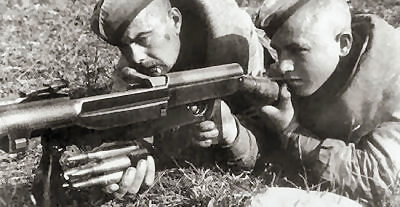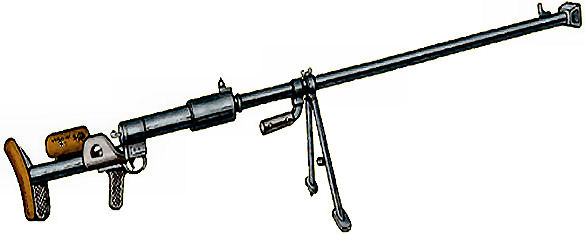The 14.5mm bullet, probably the heaviest "small-arms" round found anywhere in regular service (the British .55 in converts to 13.97mm), was fired from a massive cartridge case. When redundant in its anti-tank role, the 14.5 mm became a heavy-machine gun round, and was used as a long range sniper rifle by the North Koreans during the Korean War.
During WWII, the PTRD was only effective against German armor when fired from the side at point-blank range and hitting a vertical plate. Although the only effective infantry weapons against tanks by the time of the Korean War were HEAT missiles from the 3.5in super bazooka and the recoilless rifles, the PTRD-1941 was effective against ordinary transport, and much more effective and safer to use than the TNT satchel charges which were the primary anti-tank weapons available to the poorly armed CCF. Its most effective application in korea was as a long distance sniper rifle.
The rifle itself, while it appeared to be simple, was actually quite an ingenious design and (according to Hogg and Weeks) probably owed something to the German PzB38. The barrel was allowed to recoil in the stock and, during this movement, the bolt rode on a cam which rotated and unlocked it. At the end of the recoil stroke, the bolt was held and the barrel moved back into battery, moving away from the bolt to open the breech and eject the spent case. A fresh round was then inserted and the bolt was manually closed. In some respects, this could be described as a "long recoil" system.
The bullet was originally a steel-cored streamlined armour-piercing type, but this was superseded by a non-streamlined tungsten-cored armour-piercing-incendiary pattern.




